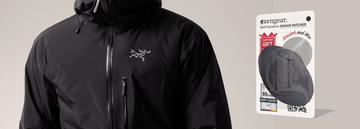Tennis Elbow: Understanding, Treating, and Preventing the Painful Condition
by Emily Jannet on Jun 21, 2023
Tennis elbow, also known as lateral epicondylitis, is a common condition that causes pain and discomfort in the outer part of the elbow and forearm. Despite its name, tennis elbow can affect anyone, not just tennis players. It is a result of repetitive arm and wrist movements, leading to inflammation and micro-tears in the tendons that connect the forearm muscles to the elbow. In this comprehensive guide, we will delve into the intricacies of tennis elbow, exploring its causes, symptoms, treatment options, prevention strategies, and more.
Understanding Tennis Elbow
What is Tennis Elbow?
Tennis elbow is a condition characterized by the inflammation and degeneration of the tendons that attach to the bony prominence on the outside of the elbow. The medical term for this bony prominence is the lateral epicondyle, hence the condition's alternative name, lateral epicondylitis. The repetitive motions of the arm and wrist can cause small tears in these tendons, leading to pain and limited mobility.
Anatomy of the Elbow
To understand tennis elbow better, it's essential to have a basic understanding of the elbow's anatomy. The elbow joint is formed by three bones: the humerus in the upper arm and the ulna and radius in the forearm. Tendons connect muscles to bones, and in the case of tennis elbow, the tendons affected are those that attach to the lateral epicondyle.
How Does Tennis Elbow Develop?
Tennis elbow develops as a result of repetitive stress on the tendons that attach to the lateral epicondyle. Activities that involve repetitive motions of the forearm, such as gripping, twisting, and lifting, can strain the tendons over time. This can occur not only in sports like tennis but also in occupations that require repetitive arm movements, such as painting, plumbing, and carpentry.
Symptoms of Tennis Elbow
Common Signs and Symptoms
Tennis elbow presents with a range of symptoms, including:
- Pain or burning sensation on the outside of the elbow
- Weak grip strength
- Difficulty performing simple tasks, such as shaking hands or turning a doorknob
- Pain that worsens with gripping or lifting objects
- Pain radiating from the elbow to the forearm and wrist
Differentiating Tennis Elbow from Other Conditions
Tennis elbow can sometimes be mistaken for other conditions that cause similar symptoms. One such condition is golfer's elbow, which affects the tendons on the inside of the elbow. However, golfers elbow differs from tennis elbow in terms of the specific tendons affected and the location of the pain. It's important to consult a healthcare professional for an accurate diagnosis.
Diagnosing Tennis Elbow
Physical Examination
During a physical examination, a healthcare professional will assess the range of motion of your arm, apply pressure to the affected area, and ask you to perform specific movements to determine the source of your pain. They may also ask about your medical history and any recent activities that may have contributed to the development of your symptoms.
Diagnostic Imaging
In some cases, diagnostic imaging tests such as X-rays or magnetic resonance imaging (MRI) may be recommended to rule out other potential causes of elbow pain, such as fractures or joint abnormalities. These imaging tests can provide a detailed view of the bones, muscles, and tendons in the affected area.
Treatment Options for Tennis Elbow
Conservative Treatments
In most cases, tennis elbow can be effectively treated with conservative measures, including:
Rest and Modification of Activities
Resting the affected arm and avoiding activities that exacerbate the pain can help alleviate symptoms and promote healing. Modifying your technique or using ergonomic tools and equipment can also reduce strain on the tendons.
Physical Therapy
Physical therapy plays a crucial role in the treatment of tennis elbow. A physical therapist can guide you through exercises and stretches that strengthen the forearm muscles, improve flexibility, and promote healing. They may also recommend techniques such as massage and manual therapy to reduce pain and inflammation, as well as wearing elbow support sleeves.
Pain Medications
Over-the-counter pain medications, such as nonsteroidal anti-inflammatory drugs (NSAIDs), can help manage pain and reduce inflammation associated with tennis elbow. However, it's important to use these medications as directed and consult a healthcare professional if the pain persists or worsens.
Advanced Treatments
If conservative treatments do not provide sufficient relief, your healthcare provider may suggest more advanced treatment options, including:
Corticosteroid Injections
Corticosteroid injections deliver powerful anti-inflammatory medication directly to the site of pain and inflammation. These injections can provide temporary relief from symptoms, but their long-term effectiveness is still a topic of debate among medical professionals.
Platelet-Rich Plasma (PRP) Therapy
PRP therapy involves injecting a concentrated solution of platelets derived from your own blood into the affected area. Platelets contain growth factors that can promote tissue healing and regeneration.
Extracorporeal Shockwave Therapy (ESWT)
ESWT is a non-invasive procedure that uses high-energy sound waves to stimulate the body's natural healing process. This treatment option has shown promising results in reducing pain and improving function in individuals with tennis elbow.
Surgery
Surgery is usually considered a last resort for individuals who have not responded to conservative treatments. The surgical procedure for tennis elbow involves removing damaged tissue and repairing any tears in the tendon. Rehabilitation and physical therapy are typically necessary following surgery to restore strength and function.
Rehabilitation and Recovery
Rehabilitation Exercises
Once the acute pain and inflammation have subsided, rehabilitation exercises play a crucial role in restoring strength, flexibility, and function to the affected arm. These exercises often focus on eccentric strengthening, where the muscles lengthen under tension, helping to rebuild and remodel the damaged tendons.
Strengthening and Stretching
Strengthening exercises for the forearm muscles can help prevent future recurrences of tennis elbow. These exercises may involve using weights, resistance bands, or specialized equipment designed to target the specific muscles involved.
Stretching exercises are equally important and should be performed before and after physical activity to improve flexibility and reduce the risk of injury.
Gradual Return to Activity
As the healing progresses and symptoms improve, it's important to gradually reintroduce activities that previously caused pain. Starting with light and low-impact exercises and gradually increasing the intensity and duration can help prevent re-injury.
Preventing Tennis Elbow
Proper Technique and Form
Whether you're playing tennis, painting, or engaging in any activity that involves repetitive arm movements, using proper technique and form is crucial. This reduces the strain on your tendons and helps distribute the forces more evenly.
Warm-up and Cool-down
Before engaging in physical activity, it's essential to warm up your muscles and joints to increase blood flow and flexibility. Likewise, cooling down after exercise helps flush out toxins and reduce muscle soreness.
Equipment Considerations
Using appropriate equipment, such as a well-fitted racket or ergonomic tools, can significantly reduce the risk of developing tennis elbow. Equipment that provides proper support and cushioning can absorb shock and minimize strain on the tendons.
Elbow Sleeve for Support
One effective way to prevent and manage tennis elbow is by wearing an elbow sleeve. An elbow sleeve is a compression garment that provides support and stability to the elbow joint. It applies gentle pressure to the affected area, improving blood flow and reducing inflammation.
The compression of the sleeve helps to alleviate pain and discomfort, and it provides warmth to the muscles and tendons, promoting healing and preventing further injury. The snug fit of the sleeve also offers proprioceptive feedback, enhancing your awareness of the position and movement of your elbow.
When choosing an elbow sleeve, opt for a high-quality, properly fitting sleeve that provides the right level of compression. It should be snug but not overly tight, allowing for comfortable movement and flexibility.
Cross-training and Conditioning
Engaging in a variety of physical activities and cross-training can help prevent overuse injuries like tennis elbow. Incorporating exercises that target the forearm muscles, as well as overall conditioning and strength training, can improve your overall fitness and reduce the risk of injury.
Conclusion
Tennis elbow is a painful condition that can significantly impact your daily activities and quality of life. By understanding its causes, symptoms, treatment options, and prevention strategies, you can take proactive steps to manage and alleviate the pain. If you suspect you have tennis elbow or are experiencing persistent elbow pain, it's crucial to consult a healthcare professional for an accurate diagnosis and appropriate treatment.
Remember, early intervention and comprehensive care can help you regain strength, mobility, and ultimately, get back to doing the activities you love!





